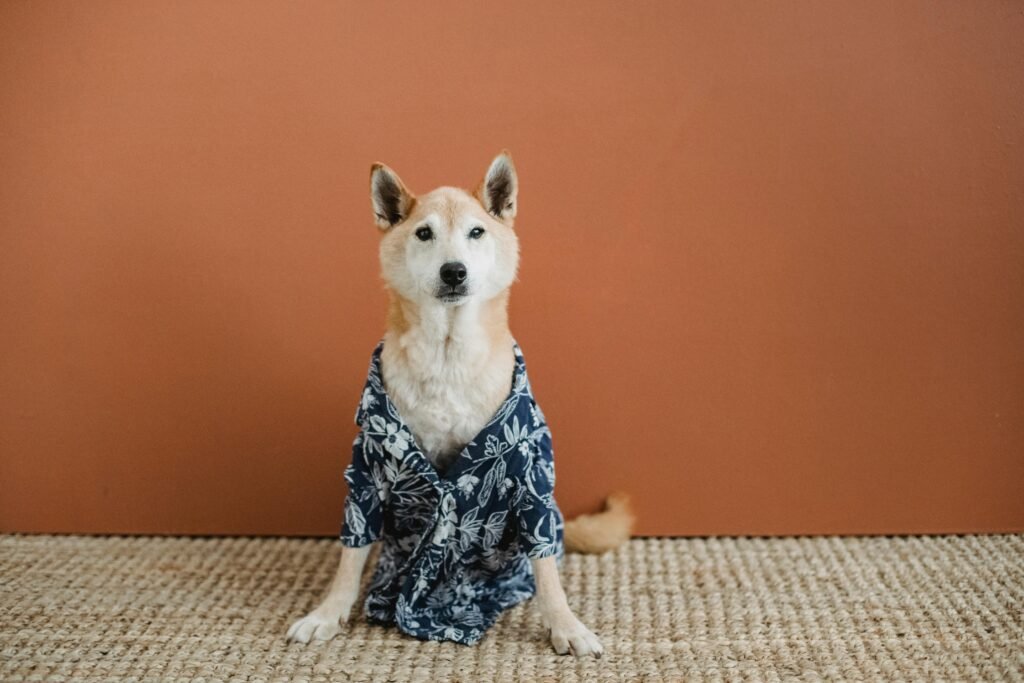Flying with your dog can feel like navigating a maze of regulations, worries, and “what-ifs.” Whether you’re relocating, taking an extended vacation, or visiting family, ensuring your furry co-pilot stays safe and calm at 30,000 feet requires more than just a sturdy crate and crossed fingers. Let’s break down the science, logistics, and pro tips to turn a potentially stressful journey into a smooth ride for both of you.
Table of Contents
Your Dog’s Safety & Comfort Starts Before Takeoff
Pre-Flight Health Prep: Partnering With Your Vet
Before booking tickets, schedule a veterinary checkup 7–10 days before departure. This isn’t just a formality—it’s a critical step to catch hidden health issues. For example, brachycephalic breeds (like Bulldogs, Pugs, and Boston Terriers) are prone to breathing difficulties in pressurized cabins. A study by the International Pet and Animal Transportation Association found these breeds face a 50% higher risk of respiratory distress during flights. Your vet might recommend:
- Cardiopulmonary exams to assess oxygen tolerance.
- Fasting guidelines: A light meal 4–6 hours pre-flight to curb nausea.
- Hydration boosts: Electrolyte solutions like unflavored Pedialyte to prevent dehydration without causing accidents.
Most airlines require an International Health Certificate (IHC) signed by a USDA-accredited vet. This document confirms your dog’s vaccinations, parasite treatments, and overall fitness to fly.
Crate Training: The 4-Week “Home Away From Home” Plan
A whopping 74% of dogs adapt faster to travel when crates are introduced gradually, according to pet behavioral studies. Here’s how to make the crate a cozy den, not a prison:
- Weeks 1–2: Place the open crate in your living room with comfy bedding and treats. Let curiosity lead the way.
- Weeks 3–4: Serve meals inside the crate and practice short closures (5–60 minutes).
- Pre-Flight Rehearsals: Take test drives (literally!) with crate-secured car rides to mimic motion and noise.
Pro Tip: Airlines require IATA-compliant crates (rigid, ventilated, and spacious enough for standing). Add a shearling-lined pad to cushion joints during long hauls.
Airline Policies Decoded: Cabin vs. Cargo
Not all airlines treat pets equally. Some ban snub-nosed breeds outright, while others charge eye-watering fees. Let’s compare:
| Factor | In-Cabin | Cargo Hold |
|---|---|---|
| Weight Limit | ≤9 kg (20 lbs) | Varies by airline; up to 45 kg (100 lbs) |
| Cost | $95–$250 one-way | $200–$1,000+ (depends on size/distance) |
| Breed Restrictions | Rare (unless oversized) | Common for brachycephalic breeds |
| Owner Access | Under your seat | Handled by staff; no mid-flight check-ins |
| Best For | Small dogs, short flights | Large dogs, international routes |
Key Insight: Direct flights are golden. Layovers increase stress and mishap risks. Delta and Lufthansa are top picks for pet-friendly policies, but always verify embargo dates (e.g., summer heat bans).
In-Flight Zen: Calming Strategies That Work
Ditch the Sedatives—Try These Instead
Sedatives like acepromazine can backfire at high altitudes, causing dangerous drops in blood pressure. Instead, veters recommend:
- L-Theanine supplements: Reduces cortisol by 45% within an hour (vet-approved study).
- Adaptil Pheromone Collars: Mimic calming mother-dog scents, lowering heart rates by 22 bpm.
- Pressure Wraps: The ThunderShirt’s gentle swaddle cuts anxiety behaviors by 67%.
Beat Boredom (and Noise) Like a Pro
- Freeze-Dried Treats: Stuff a Kong with liver paste—it’s the canine equivalent of binge-watching Netflix.
- Species-Specific Playlists: Apps like Through a Dog’s Ear use rhythmic tones to mask engine roars, reducing startle responses by 38%.
Post-Flight TLC: Helping Your Dog Recharge
Landing isn’t the finish line. Dogs need gradual rehydration and mobility to bounce back:
- Water in Small Doses: Offer 50 ml every 15 minutes to avoid stomach upset.
- Short Walks: 5-minute strolls hourly to reboot circulation.
- Monitor Closely: Lethargy or panting post-flight? IV fluids might be needed
Final Boarding Call
Flying with your dog doesn’t have to be a nightmare. By marrying vet science, smart prep, and airline savvy, you’re not just transporting a pet—you’re safeguarding a family member. Emerging tools like GPS collars and AI stress predictors (looking at you, PetPace) will soon make jet-setting with Fido even smoother.
So, take a deep breath, double-check that crate, and remember: 92% of dogs ace air travel with the right support. Yours will too.
FAQ: Keeping Your Dog Safe & Comfortable on Long Flights
1. Can I sedate my dog for the flight?
No. Most veterinarians and airlines strongly advise against sedatives, as they can interfere with breathing and circulation at high altitudes. Instead, use vet-approved calming aids like L-Theanine supplements or Adaptil pheromone collars, which reduce anxiety without risky side effects.
2. How do I choose the right crate size?
Your dog must be able to stand, turn, and lie down comfortably. Crates must meet IATA Container Requirement 82 (rigid, ventilated, and secure). Measure your dog from nose to tail and floor to head, then add 4–6 inches to each dimension.
3. What if my dog needs to pee during the flight?
Line the crate with absorbent pads and avoid overhydrating your dog 2 hours pre-flight. For layovers, request a “pet relief area” at airports—many major hubs now have them. For long flights, attach a spill-proof water dispenser to the crate.
4. Are certain dog breeds banned from flying?
Yes. Many airlines restrict brachycephalic breeds (e.g., Bulldogs, Pugs) from cargo holds due to breathing risks. Always check your airline’s breed policy before booking. Some carriers allow these breeds in-cabin if they meet size/weight limits.
5. What documents do I need for international flights?
- International Health Certificate (IHC): Issued by a USDA-accredited vet 7–10 days pre-flight.
- Rabies titer test: Required by countries like Japan and the EU.
- Import permits: Check your destination’s agriculture website.
6. How long does it take for my dog to recover post-flight?
Most dogs bounce back within 24–72 hours. Offer small amounts of water, gentle walks, and a quiet space to rest. Monitor for prolonged lethargy, vomiting, or labored breathing, which may require a vet visit.



